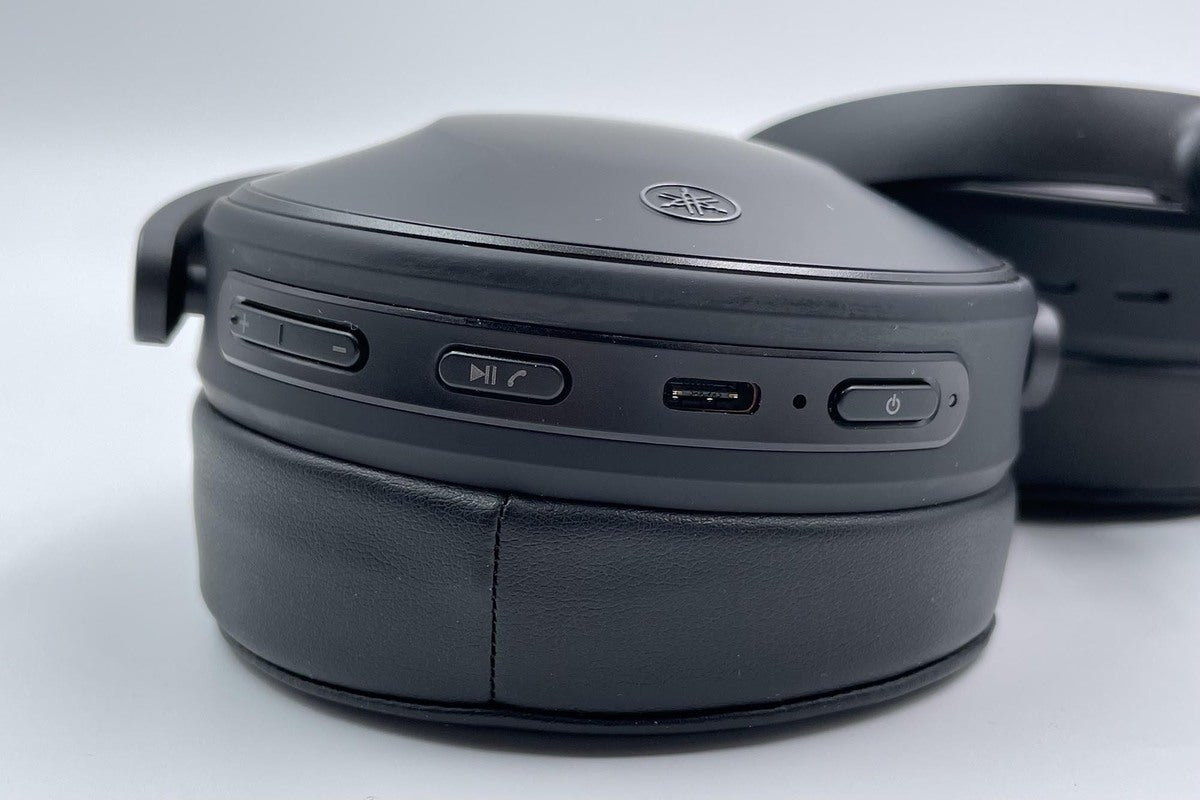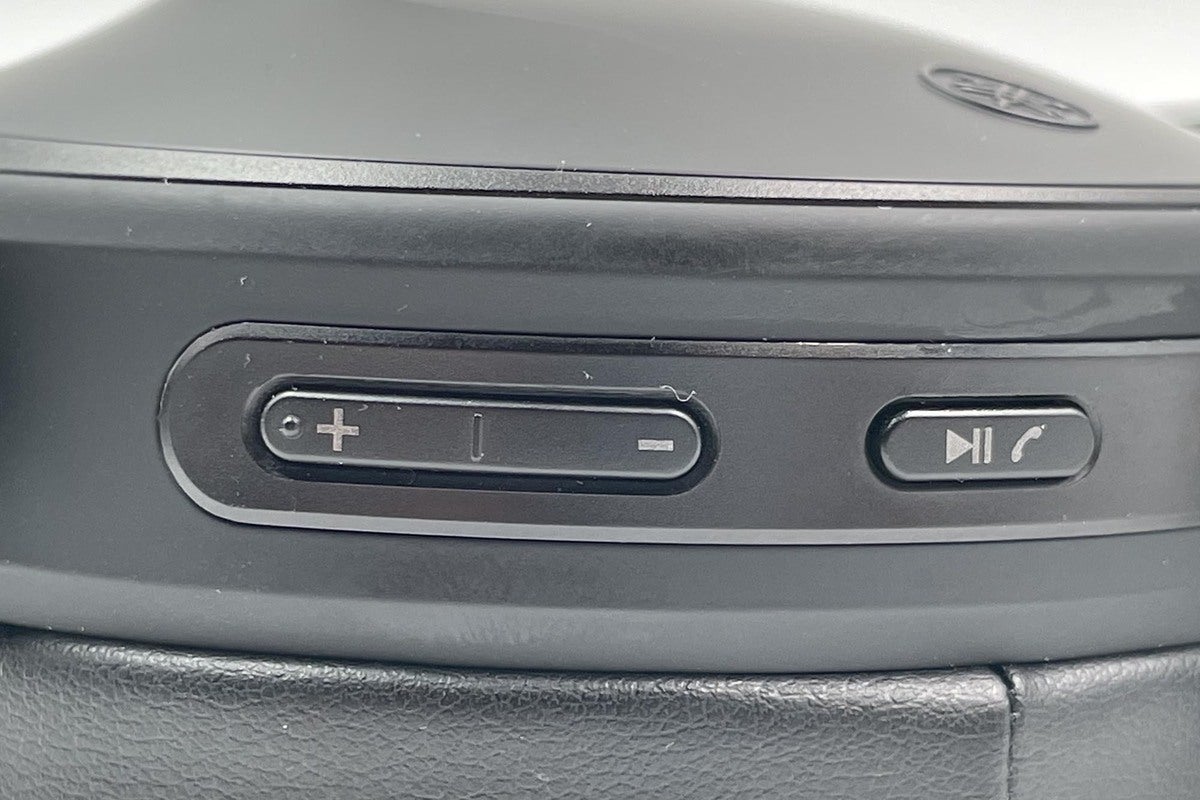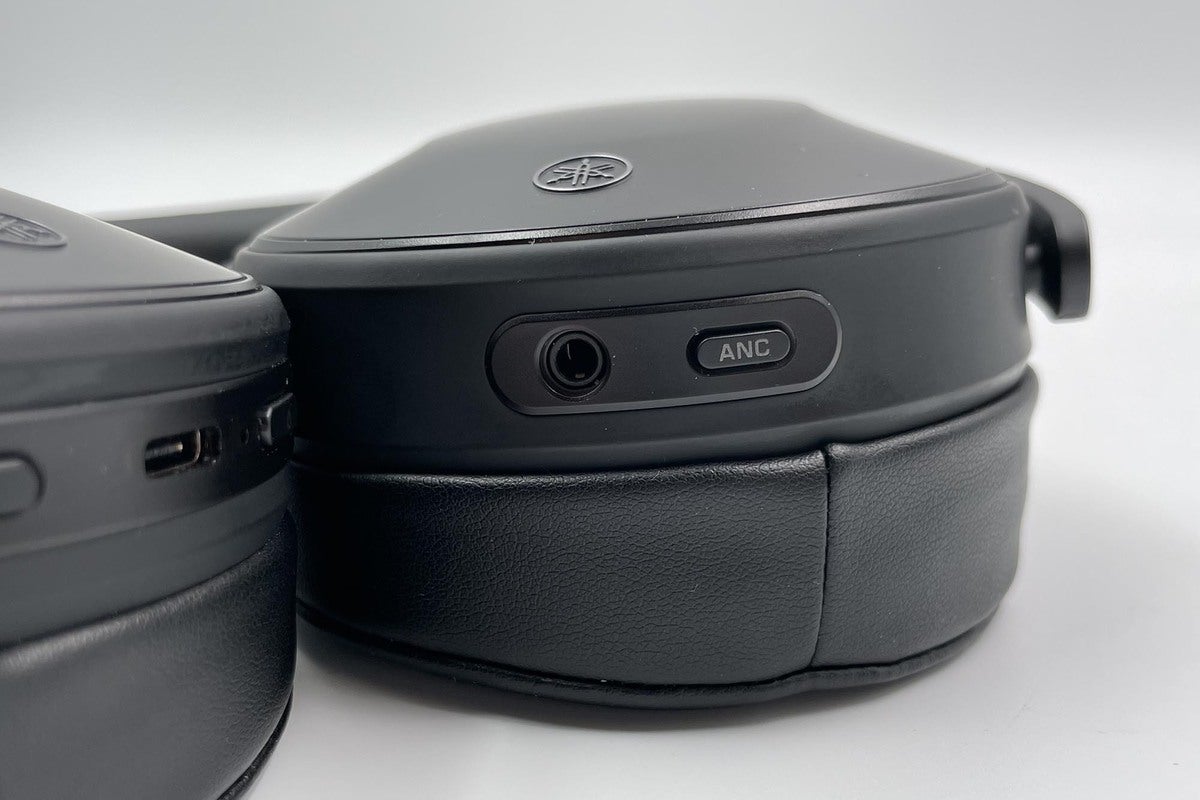Active Noise Cancelling (ANC) headphones are a modern marvel with one major drawback: Many will unintentionally wipe out some of the frequencies present in the music you’re listening to. Yamaha says its $299 YH-E700A ANC headphone delivers nearly identical sound whether its active noise cancellation is on, off, or in transparency mode.
I’d say Yamaha has at least come closer to that goal than any other headphone I’ve reviewed, and that should make an extremely appealing set of cans for those who eschew active noise cancellation because they feel the technology has an adverse impact on musical recordings. That said, the YH-E700A aren’t without a few other wrinkles that Yamaha will hopefully iron out via future firmware updates.
This review is part of TechHive’s coverage of the best noise-cancelling headphones, where you’ll find reviews of the competition’s offerings, plus a buyer’s guide to the features you should consider when shopping for this type of product.
Feature set
The Yamaha YH-E700A adds several features you won’t find in its less-expensive noise-cancelling stablemate, the YH-E500 ($179.95): Advanced ANC that Yamaha says “cuts the noise not the music,” a Listening Optmizer, support for Hi-Res audio (when connected with a cable), and support for Qualcomm’s aptX Adaptive codec in addition to SBC and AAC (the less-expensive cans support those codecs plus aptX HD). I successfully paired the Yamaha headphones with my Astell&Kern Kann with the aptX HD codec.
Yamaha says says its Listening Optimizer measures factors such as headphone seal and air leakage every 20 seconds and analyzes that information to customize the headphone’s audio performance fore each listener. Both headphones are outfitted with Bluetooth 5 radios, and I found YH-700A’s wireless range to be outstanding. I easily got to the promised 30-foot range even when going between floors, across rooms, and having the YH-E700A pass signals through different building materials.
If you’re using these headphones with your smartphone, you’ll be happy to know that both Apple Siri and Google Assistant are supported.
The YH-E700A are travel-friendly, weighing in at 11.46 ounces, and they fold flat into a hardshell case for easy storage and travel. Speaking of travel, you’ll get up to 35 hours of playback with ANC active—that’s enough for several transatlantic flights. A full recharge takes only about 3.5 hours.
 Theo Nicolakis/IDG
Theo Nicolakis/IDG
The right ear cup has all the primary controls, plus a USB-C charging port.
In addition to the aforementioned kidney-shaped, hard carrying case, you’ll also find a USB-C charging cable, a 3.5mm cable analog audio cable, and an airline adapter. The carrying case has a pocket to hold cables and adapters.
Build quality
The YH-E700A’s fit-and-finish is consistent with headphones in the $300 price range, but it won’t garner any industrial design awards. The headband is decently padded and covered in a high-quality imitation leather.
I can’t imagine the challenge headphone designers have with developing foldable headbands that fit the wide cross-section of the population. Yamaha’s mushroom-shaped headband is slightly different from the usual, and it didn’t complement the shape of my head. Consequently, the YH-E700A exerted slightly more pressure on the top of my head than I’m accustomed to. While not entirely uncomfortable, the concentrated pressure was a constant reminder that I was wearing a headphone, and I needed to adjust them from time to time during long listening sessions. If you have a rounder noggin and find traditional headband designs uncomfortable, the YH-E700A just might be the ticket for you.
 Theo Nicolakis/IDG
Theo Nicolakis/IDG
The Yamaha YH-E700A headphones feature a mushroom-shaped headband that exerted some pressure on the top of my head.
The YH-E700H’s click-adustable arms are plastic inlaid with a brushed-aluminum band. This hybrid design is a cost-conscious choice that should improve the arm’s durability while also keeping the weight down.
Yamaha’s ear cup design is fabulous. The ear cups swivel smoothly on a vertical axis and fold flat for carrying. They also pivot horizontally to adjust to the contour of your face. I found that the YH-E700A ear cups delivered a consistently solid, snug, and comfortable seal all around my ears.
The right ear cup sports the headphone’s main control buttons, while the left ear cup has a single button for toggling between three modes: ANC on, ANC off, and transparency mode. Press the ANC button and you’ll hear a pleasant female voice with a British accent announce which mode you’ve activated. You’ll never be left guessing.
 Theo Nicolakis/IDG
Theo Nicolakis/IDG
The Yamaha headphones come with a kidney-shaped hardshell carrying case, a USB charging cablean, a 3.5mm analog audio cable, and an airline adapter.
Tapered ear pads make all the difference
At first glance, the YH-E700A looks chubby. Upon closer inspection, you’ll quickly see it’s partly an illusion spurred by the Yamaha’s noticeably tapered ear pads.
Most headphone ear pads have a uniform depth, even though the areas behind and under our ears are recessed more than the jaw area in front of our ears. The YH-E700A are meticulously tapered to match the curved shape of the human head. The back of the YH-E700A’s ear pads taper from approximately 5/8-inch at the front to a full 1-inch at the back.
 Theo Nicolakis/IDG
Theo Nicolakis/IDG
The Yamaha YH-E700A’s tapered earcups provide a comfortable, solid seal around your ears.
Minor quibbles and a major issue
While you can learn to find the proper placement of the functional buttons on the right ear cup over time, I didn’t find the buttons to be tactile-friendly. There’s just a dot for volume up and a horizontal line in the middle to let you know when the volume down begins. Yamaha should have taken notes from the excellent implementations you’ll find on B&W, V-Moda, and B&O headphones, each of which provide a slight peak to differentiate between the + and - functions; either that or a dot on both ends to designate the beginning and ending of the volume button’s range.
I came across a more disconcerting problem with the volume button. The YH-E700A have a maddening volume control issue and I docked the YH-E700A a half-star due to this deficiency. When I first received my review unit, the volume controls didn’t work—no matter what device I connected via Bluetooth.
This wasn’t a hardware defect. Pressing and holding the volume buttons for two seconds worked perfectly to advance/rewind a song. A firmware update from Yamaha (v1.39) partially fixed the issue. After running a firmware update, I could advance the volume when playing music through apps like Tidal or Apple Music on my iPhone 12, but I still couldn’t adjust the volume while using other apps, such as a Facebook Live broadcast. I had no problems adjusting volume on my iPhone 12 with other headphones in my review arsenal. This is very much out of character for Yamaha, and the company needs to this issue with some urgency.
 Theo Nicolakis/IDG
Theo Nicolakis/IDG
The volume button needs more tactile markers to give me confidence when trying to adjust the volume—especially when trying to lower the volume
The app does the job
Yamaha’s companion mobile app is called “Headphones Controller” and is available for iOS and Android. There’s nothing fancy about the app. Headphone Controller provides five basic functions: It displays the current battery level; it toggles Listening Care, Listening Optimizer, and noise cancelling; and it gives you the option of turning on the headphone’s auto power-off timer to conserve battery power when there’s no signal to the headphone. The app is the only way toggle the Listening Care, listening optimizer, and auto-power off settings.
Noise cancelling and transparency performance
The Yamaha has three modes: ANC on, ANC off, and transparency. Yamaha’s noise cancelling exhibits only the slightest noise. It’s more like subtle vent noise from an extremely well-damped HVAC system as opposed to the annoying “SHH” sound in other ANC headphones. The YH-E700A did not produce strong ANC pressure on my ears to give me that “underwater” effect you’ll sometimes feel with ANC headphones.
To test the Yamaha’s ANC performance, I played airplane cabin noise through my sound system and cranked up the volume until I registered 92dB on my sound pressure level (SPL) meter at approximately four feet away from the speaker to mimic the noise and volume on an airplane. While the Yamaha doesn’t dethrone Sony’s and Bose’s ANC performances, the Yamaha did a very respectable job. This is a significant achievement considering how well the Yamaha’s sonic performance is across all it’s ANC modes (on/off/transparency).
The Yamaha outperformed the B&O Portal and Bowers and Wilkins PX7 (1st Gen) ANC headphones, although with a caveat: Some people might prefer B&W’s ANC performance. B&W’s ANC algorithm did a better job filtering out engine noise in the lower frequency bands, but it let more of the higher-frequency engine noise through. Yamaha’s ANC performance was just the opposite.
 Theo Nicolakis/IDG
Theo Nicolakis/IDG
An ANC toggle and a 3.5mm analog input are located on the left ear cup.
I’m amazed at how far ambient sound technology has come in the past several years and Yamaha’s overall implementation is outstanding. Birds chirping, the clicking of a keyboard, and voices sounded transparent—natural in both timbre and volume.
Listening tests
I tested the Yamaha YH-E700A with an Astell&Kern Kann high-res DAP and an iPhone 12 Pro. Source material included hi-res files stored locally on my Astell&Kern Kann (played wired and wirelessly); Tidal streams with an emphasis towards Tidal Masters; source material streamed from my Roon Nucleus media server to the Roon app on my iPhone 12 Pro both wirelessly and with a Lightning cable connected to a Helm Audio Bolt DAC/AMP.
The Yamaha YH-E700A delivers simply fabulous top to bottom sound. I had to continually remind myself that this was just a $300 pair of headphones. The midrange was clear, dimensional, and airy. Vocals had superb presence ansd timbral accuracy. The balance and timbral signature of songs played through the Yamaha YH-E700A—including piano notes—reminded me of key hallmarks of my reference speakers.
Listening to the YH-E700A with ANC on and off was remarkably similar, and Yamaha deserves an incredible amount of credit for its achievement: Advanced ANC works as advertised.
Thunderous and prodigious bass and dynamics on the YH-E700A are both a blessing and a mild curse. It’s clear that the headphones are voiced with a slightly emphasized bottom end. The headphones maintain an uncanny sense of bass detail and texture you ordinarily won’t find at this price point. This is powerful and intoxicating bass—not boomy bass.
 Theo Nicolakis/IDG
Theo Nicolakis/IDG
The plastic headband is inlaid with a brushed-aluminum band that should provide extra durability.
The flip side is that on certain tracks (such as the 16-second mark on “The Greatest Show” from the Greatest Showman Motion Picture Sountrack), the bass can be overwhelming and disproportionately emphasized if you’re playing the headphones at any modestly loud volume. The same was true on Billy Joel’s “Piano Man,” where bass notes popped as pulses of air in my ears. It gets worse if you turn on all the DSP processing features. Bass heads will probably love it, but audiophiles will raise an eyebrow.
When enabled, Listening Care provides a noticeable boost to the bass and lower midrange to deliver a warmer but thicker sound. If you like to play your headphones at lower or modest volume and long for a bit more oomph at those levels, you’ll certainly like Listening Care. The audiophile side of me inherently rejects any such DSP tomfoolery, and I conducted my listening tests with Listening Care turned off.
Note that all of my observations about the Yamaha YH-E700A’s musical performance applies to using them in “active” mode; i.e., battery powered and connected to a high-quality source (via Bluetooth or cable, and with a cable delivering the best performance of all). The experience is very different when these cans are used as a passive device—no power and wired to an audio source with a cable. In fact, I’d go so far as to say the experience was subpar—even when connected to a superlative source and amplifier such as the Astell&Kern Kann..
 Theo Nicolakis/IDG
Theo Nicolakis/IDG
The headphones fold flat and the carrying case features a pocket to hold your cables and accessories.
Conclusion
Nothing in its styling tells you Yamaha’s YH-E700A headphone is a sonic rock star that delivers on Yamaha’s promise to deliver a high-performance active noise-cancelling headphone that doesn’t alter the music. If you’ve ever been frustrated by the coloration that ANC brings to your music, then look no further than these cans. You can spend a lot more than $300 and not get this kind of musical satisfaction.
On the downside, not everyone will find the YH-E700A’s mushroom-shaped headband to be comfortable, and this headphone’s quirky volume control tempered an otherwise superlative review experience, ultimately costing Yamaha a half star.
April 28, 2021 at 05:00PM
https://ift.tt/2PyLZNI
Yamaha YH-E700A ANC headphone review: Excellent noise cancelling - TechHive
https://ift.tt/2ZqQevw
Yamaha

No comments:
Post a Comment